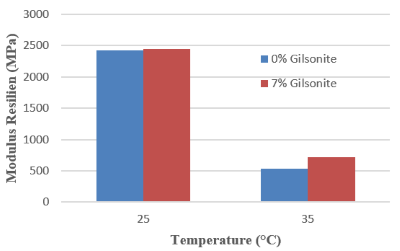Permeability and Dynamic Stability in Porous Asphalt Mixtures Using Cariphalte Asphalt and Gilsonite Additives
DOI:
https://doi.org/10.24036/cived.v11i3.624Keywords:
Porous Asphalt, Permeability, Dynamic Stability, Resilient ModulusAbstract
Porous asphalt mixture is a new generation of flexible pavement that allows water to seep into the top layer (wearing course) both vertically and horizontally. This condition is possible, because the gradation used has a coarse aggregate fraction of not less than 85% of the mixture volume. This layer uses an open gradation (open graded) which is spread over a layer of waterproof asphalt to prevent seepage into the road foundation. This porous asphalt layer can effectively provide a greater level of safety, especially during rainy times to prevent aqua-planing, resulting in rougher surface roughness and can reduce noise (noise reduction). In this research, a test will be carried out on porous asphalt with a mixture using Cariphalte modified asphalt and gilsonite as the added ingredient. Variations in asphalt content used are 4%, 5%, 6%, 7%, 8%. Determination of variations in levels of variation is based on research that has been conducted. This research involves analysis of calculation results based on experimental data from laboratory scale experiments including Marshall Testing, Immersion Index, Permeability, Slip Resistance, Dynamic Stability, and Resilient Modulus. The test results show that the smallest permeability value is in the 8% gilsonite mixture but it does not meet the requirements of AAPA 2004 so the mixture with the greatest stability value is used. From the results of dynamic stability testing, it shows that the mixture of test objects with a content of 7% gilsonite has a dynamic stability value of 5250 passes/mm at a temperature of 45°C and 3150 passes/mm at a temperature of 60°C.
Downloads
References
Ameri, M., & Aboutalebi Esfahani, M. (2008). Evaluation and Performance of Hydrated Lime and Limestone Powder in Porous Asphalt. Road Materials and Pavement Design, 9(4), 651-664. https://doi.org/10.3166/rmpd.9.651-664.
Chen, M. J., & Wong, Y. D. (2013). Porous asphalt mixture with 100% recycled concrete aggregate. Road Materials and Pavement Design, 14(4), 921-932. https://doi.org/10.1080/14680629.2013.837839.
Construction of porous asphalt pavement using graphene. (2018). International Journal of Recent Trends in Engineering and Research, 4(4), 482-486. https://doi.org/10.23883/ijrter.2018.4263.3meqq.
Herrington, P., & Alabaster, D. (2008). Epoxy Modified Open-graded Porous Asphalt. Road Materials and Pavement Design, 9(3), 481-498. https://doi.org/10.3166/rmpd.9.481-498.
Legret, M., Colandini, V., Pagotto, C., & Jullien, A. (2007). The Quality of Infiltrated Water Through Porous and Conventional Asphalt Pavements. Road Materials and Pavement Design, 8(4), 617-641. https://doi.org/10.3166/rmpd.8.617-641.
Li, M., Xu, B., Cao, D., Ping, S., Fan, Y., & Li, J. (2016). Mechanical performance of pavement using porous asphalt as overlay in maintenance. Functional Pavement Design, 139-147. https://doi.org/10.1201/9781315643274-16.
Kuznetsov, D., Visotskaya, M., & Agamijan, B. (2014). Regulation of the Properties of Asphalt Concrete Pavement by the Use of Porous Mineral Powders. Design, Analysis, and Asphalt Material Characterization for Road and Airfield Pavements. https://doi.org/10.1061/9780784478462.028.
Huurman, M., Mo, L., & Woldekidan, M. (2009). Unravelling Porous Asphalt Concrete, Towards a Mechanistic Material Design Tool. Road Materials and Pavement Design, 10, 233-262. https://doi.org/10.3166/rmpd.10hs.233-262.
National Asphalt Pavement Association, “Porous Asphalt Pavement”, National Asphalt Pavement Association, Lanham Maryland, 2003.
Hermasson, Åke. (2002). Simulation of Asphalt Concrete (AC) Pavement Temperatures for use with FWD. Road Materials and Pavement Design, 3(3), 281-297. https://doi.org/10.3166/rmpd.3.281-297.
Arimilli, S., Nagabhushana, M., & Jain, P. (2017). Comparative mechanistic-empirical analysis for design of alternative cold recycled asphalt technologies with conventional pavement. Road Materials and Pavement Design, 19(7), 1595-1616. https://doi.org/10.1080/14680629.2017.1338187.
Nitta, h., & Nishizaki, I. (2008). Mix design method of recycled porous asphalt using asphalt mortar. Journal Of Pavement Engineering, JSCE, 13, 97-105. https://doi.org/10.2208/journalpe.13.97.
Nitta, h., & Nishizaki, I. (2008) . Mix design method of recycled porous asphalt using asphalt mortar. Journal Of Pavement Engineering, JSCE, 13, 97-105. https://doi.org/10.2208/journalpe.13.97.
Praticòo, F. G., & Moro, A. (2007). Permeability and Volumetrics of Porous Asphalt Concrete. A Theoretical and Experimental Investigation. Road Materials and Pavement Design, 8(4), 799-817. https://doi.org/10.3166/rmpd.8.799-817.
Takahashi, S., & Partl, M. N. (2001). Improvement of Mix Design for Porous Asphalt. Road Materials and Pavement Design, 2(3), 283-296. https://doi.org/10.3166/rmpd.2.283-296.
Takahata, k., Gunji, y., & Kato, y. (2002). A Study on The Mix Design of Porous Asphalt Concrete That Take Wearing Resistance into Consideration in Snowy Cold Regions. Journal Of Pavement Engineering, JSCE, 7. https://doi.org/10.2208/journalpe.7.5p1
Takahashi, S., & Partl, M. N. (2001). Improvement of Mix Design for Porous Asphalt. Road Materials and Pavement Design, 2(3), 283-296. https://doi.org/10.3166/rmpd.2.283-296.

Downloads
Published
Issue
Section
License
Copyright (c) 2024 Arief Aszharri, Nadra Mutiara Sari

This work is licensed under a Creative Commons Attribution 4.0 International License.

